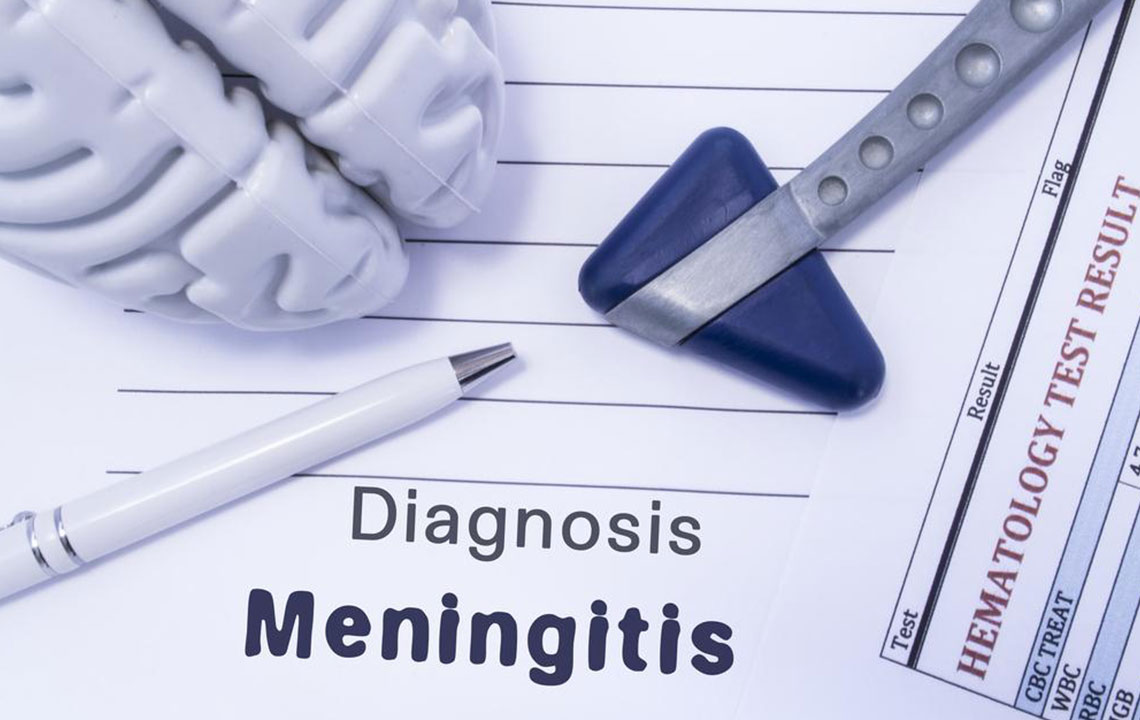The What and Why of Strep Meningitis

Meningitis is a disease characterized by the inflammation of the lining around the brain and spinal cord. The second most common type of meningitis is bacterial meningitis. Acute bacterial meningitis is caused by several strains of bacteria such as Streptococcus pneumoniae (pneumococcus), Neisseria meningitidis (meningococcus), Haemophilus influenzae (Haemophilus), and Listeria monocytogenes (listeria).
What is strep meningitis?
Strep Meningitis, also known as streptococcus meningitis or pneumococcal meningitis, is a disease caused by bacteria called Streptococcus pneumoniae. The Streptococcus pneumoniae bacteria spread and multiply in the ‘meninges’ in the brain, hence, the name meningitis.
The meninges are the membrane surrounding the brain and spinal cord, filled with cerebrospinal fluid, to protect the brain tissues from damage.
When the meninges are infected by any kind of bacteria, toxic substances are produced in the cerebrospinal fluid, which results in inflamed and swollen brain tissue.
Types of Strep Meningitis
Strep Meningitis can be of two kinds. The two types of bacteria responsible for strep meningitis are Group A Streptococcal, also known as GAS, and Group B Streptococcal, known as GBS.
A Group A streptococcal infection is caused by GAS bacteria, found on the inside of the throat and the skin’s surface. GAS bacteria are less harmful than GBS bacteria and cause issues like a sore throat, skin, ear and sinus infections.
When the bacteria penetrate the body, the threat becomes more serious as they can cause septicemia, or blood poisoning, or lung infection AKA pneumonia. Meningitis caused by gas is rare but is still a possibility.
GBS bacteria are also called Streptococcus agalactiae. These bacteria are found in the vagina, intestines, and sometimes in the throat. There is a very slight chance of these bacteria being transferred from the mother to the child during childbirth. In newborn babies, this condition is called neonatal meningitis.
Many of us are the carriers of bacteria responsible for strep meningitis. The bacteria is not harmful in normal cases unless transferred from the carrier to a person at a higher risk of being affected by it. The bacteria are transferred from one person to another via coughing, sneezing or physical contact.
In its non-severe cases, the bacteria only cause mild symptoms like pain in the throat, ear or nose, but if left untreated or undiagnosed, it can cause severe illness like meningitis, pneumonia, and even lead to septicemia.
In the case of GBS bacteria, there is only a 1% chance of the bacteria getting transferred from the mother to the baby. But in some cases, even after meningitis is cured, the effects can appear after weeks, months or even years.
These effects can range from mild to severe cognitive problems, like learning difficulties and memory problems. The effects could even extend to physical problems like hearing trouble, brain damage, problems with movement, seizures, and kidney failure.
GBS bacterial infections are relatively rare in adults, but those with a weak immune system are at a higher risk of infection.
In severe cases of strep meningitis, the bacteria enter the bloodstream and start attacking the blood vessels. The ruptured blood vessels start leaking internally. This causes blood poisoning or septicemia.
Symptoms Of Strep Meningitis
The most common symptoms of strep meningitis are a headache, stiff neck, and nausea. In some cases, skin rashes may also appear. However, the symptoms are different and extremely hard to identify in babies. It is important not to ignore such symptoms in babies, where the risk is even higher.
Treatment
It’s very important to identify the symptoms of meningitis as soon as possible and start an antibacterial treatment course. If you suspect the symptoms of strep meningitis, there should be no delay in paying a visit to the doctor.
The doctor is likely to prescribe an antibacterial treatment course. Another treatment option is a lumbar puncture (LP), which is used to confirm that the symptoms are an indicator of strep meningitis. A lumbar puncture is a procedure in which a sample of cerebrospinal fluid is taken from the spinal canal to be tested for possible bacterial infection.
Sometimes, the symptoms of strep meningitis are not very clear, but a delay in the diagnosis or treatment of bacterial meningitis can lead to severe neurological disorders, In extreme cases, it can lead to blood poisoning, lung infections, organ failure, and even death.
Prevention
Strep Meningitis can easily be prevented by administering vaccines regularly. For children in the age 11 to 12 years, meningococcal vaccines are available, which can prevent strep meningitis. An additional dose is also advisable at around 16-18 years of age. There are two kinds of vaccines for preteens and teens:
• Meningococcal conjugate vaccines
• Serogroup B meningococcal vaccines
These vaccines are also prescribed for adults who face an increased risk for meningococcal disease and should be administered properly to avoid bacterial meningitis.


